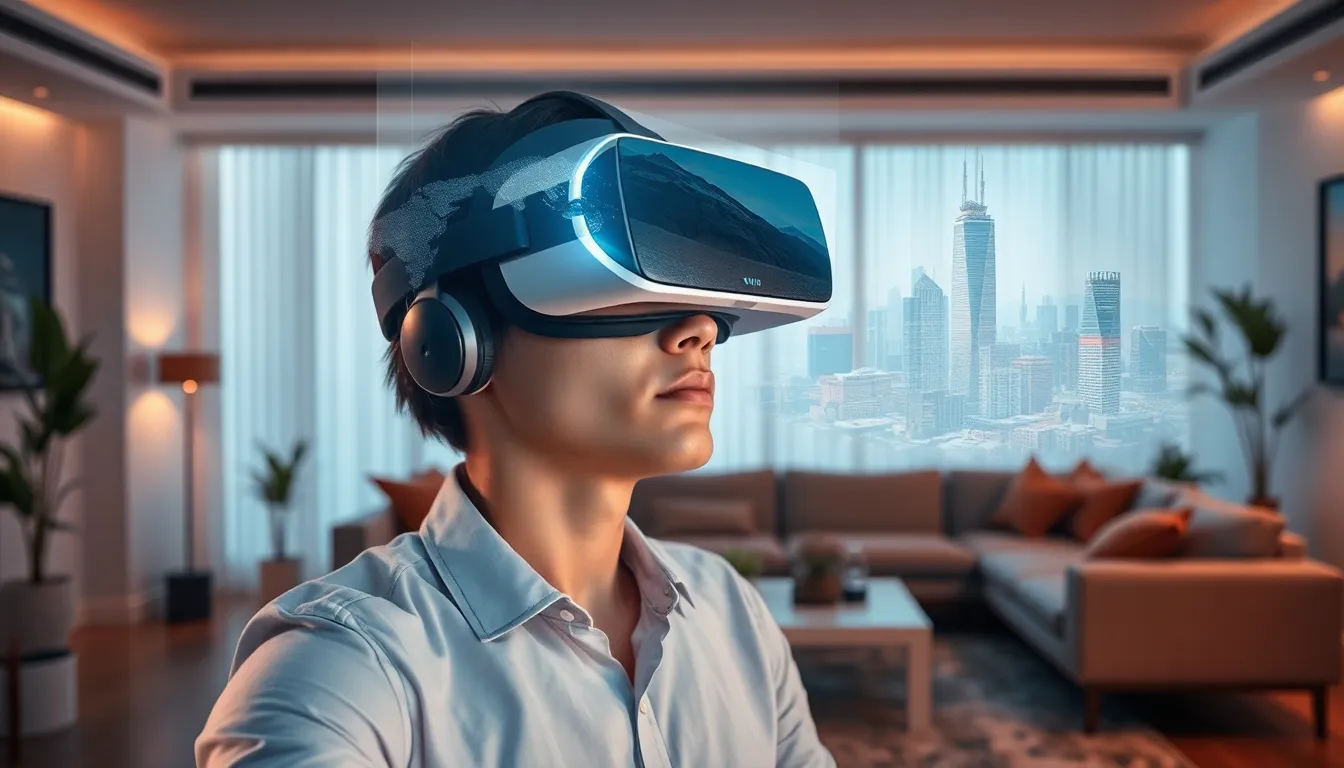Table of Contents
ToggleWhen you think of virtual reality, do you picture a lonely person strapped to a headset, awkwardly swinging their arms in a living room? Well, buckle up because Meta is about to change your perception. Picture a world where virtual interactions feel as real as handshakes and high-fives. Meta is sculpting the future, making digital experiences engaging, immersive, and oh-so-fun. Let’s jump into the universe of Meta Virtual Reality and see how it’s reshaping our digital interactions, complete with a sprinkle of humor and a hefty dose of insight.
Understanding Virtual Reality: A Brief Overview

Virtual reality, often referred to as VR, isn’t just a fancy gaming gimmick: it’s a cutting-edge technology that transports users into lifelike, computer-generated environments. With the help of VR headsets and motion tracking, users can explore, interact, and experience a three-dimensional world as if they were physically present. Imagine standing on a virtual mountaintop, feeling the wind whisking past, or walking through a futuristic city teeming with electronic billboards. The possibilities are incredibly vast.
At its core, VR aims to create an experience so immersive that users forget they are, in fact, sitting on a couch in their living rooms. By manipulating sensory stimuli, including sight, sound, and even touch, VR can evoke emotions and trigger responses that feel authentic. This technology is reshaping how we engage with entertainment, education, and even our daily social interactions.
The Evolution of Meta’s Virtual Reality Initiatives
Meta, formerly known as Facebook, has swiftly emerged as a major player in the VR landscape. In 2014, it made headlines by acquiring Oculus VR, a pioneering company in virtual reality. This acquisition was merely the beginning of a metamorphosis that would redefine the social media experience. The aim was clear: to integrate social connections into virtual worlds, sounds far out, right? Fast forward to today, and Meta’s vision is becoming a reality.
Through the development of platforms like Horizon Worlds, Meta is not just focusing on gaming but on building an entire social ecosystem. Users can create, share, and connect while exploring virtually limitless landscapes, all while sporting a headset that would make even the most skeptical tech lover raise an eyebrow. Meta’s investments continue to broaden as they refine their technology to make VR more authentic, affordable, and broadly accessible.
Key Features of Meta Virtual Reality Platforms
What sets Meta’s virtual reality platforms apart from the competition? Let’s break it down. First off, realism is king. Meta emphasizes high-resolution graphics and spatial audio, making experiences incredibly lifelike. Users can hear a virtual bird chirp from different directions, enhancing immersion and leaving them awestruck.
Also, Meta’s platforms emphasize social interactivity, allowing friends to gather in virtual spaces, attend concerts, or even watch movies together, nothing beats a popcorn-filled movie night with friends, even if it’s virtual. Also, the spatial tracking technology allows users to navigate their VR environment seamlessly. It’s as if the walls fell away and only the adventures remained.
Finally, the commitment to accessibility truly sets Meta apart. With lower-priced headsets and platforms designed to work on various devices, Meta is making sure everyone can jump on the virtual reality bandwagon.
Applications of Meta Virtual Reality in Various Fields
From healthcare to education, Meta virtual reality applications are no longer confined to gaming alone. In the medical field, VR is transforming how practitioners train. Surgeons can now use virtual simulations to practice procedures without putting patients at risk. Imagine practicing heart surgery on a simulation of a beating heart, pretty groundbreaking stuff.
Education, too, is experiencing a paradigm shift. VR offers students immersive learning experiences that textbooks can only dream of. Whether it’s exploring the pyramids of Egypt or diving into the depths of the ocean, students can grasp complex concepts through experiential learning. Picture a history class where students can virtually stand beside ancient beings, who needs time travel?
Even in corporate environments, Meta is spearheading changes by facilitating remote training sessions, team-building activities, and conferences in virtual spaces, because who wants to gather in a stuffy boardroom anymore?
Challenges and Future Prospects of Meta Virtual Reality
Even though its incredible potential, Meta’s virtual reality ventures face significant hurdles. One major challenge remains the social acceptance of VR technology. Some individuals are still hesitant to engage in a world where the line between virtual and real blurs. Ready or not, it’s important to embrace this shift as the future unfolds.
Also, technical limitations still exist. Issues like latency, resolution, and motion sickness can dampen the user experience. Tackling these challenges requires continual technological advancements and commitment from developers to deliver smoother and more realistic interactions.
Looking ahead, the prospects for Meta virtual reality are bright. As technology evolves, better hardware solutions and improved software capabilities are expected. Innovations will ensure a more immersive experience, wider application across various industries, and perhaps even the creation of a metaverse where people can connect like never before.
Meta is not just building virtual reality: it’s laying the foundation for digital realities yet to come.







